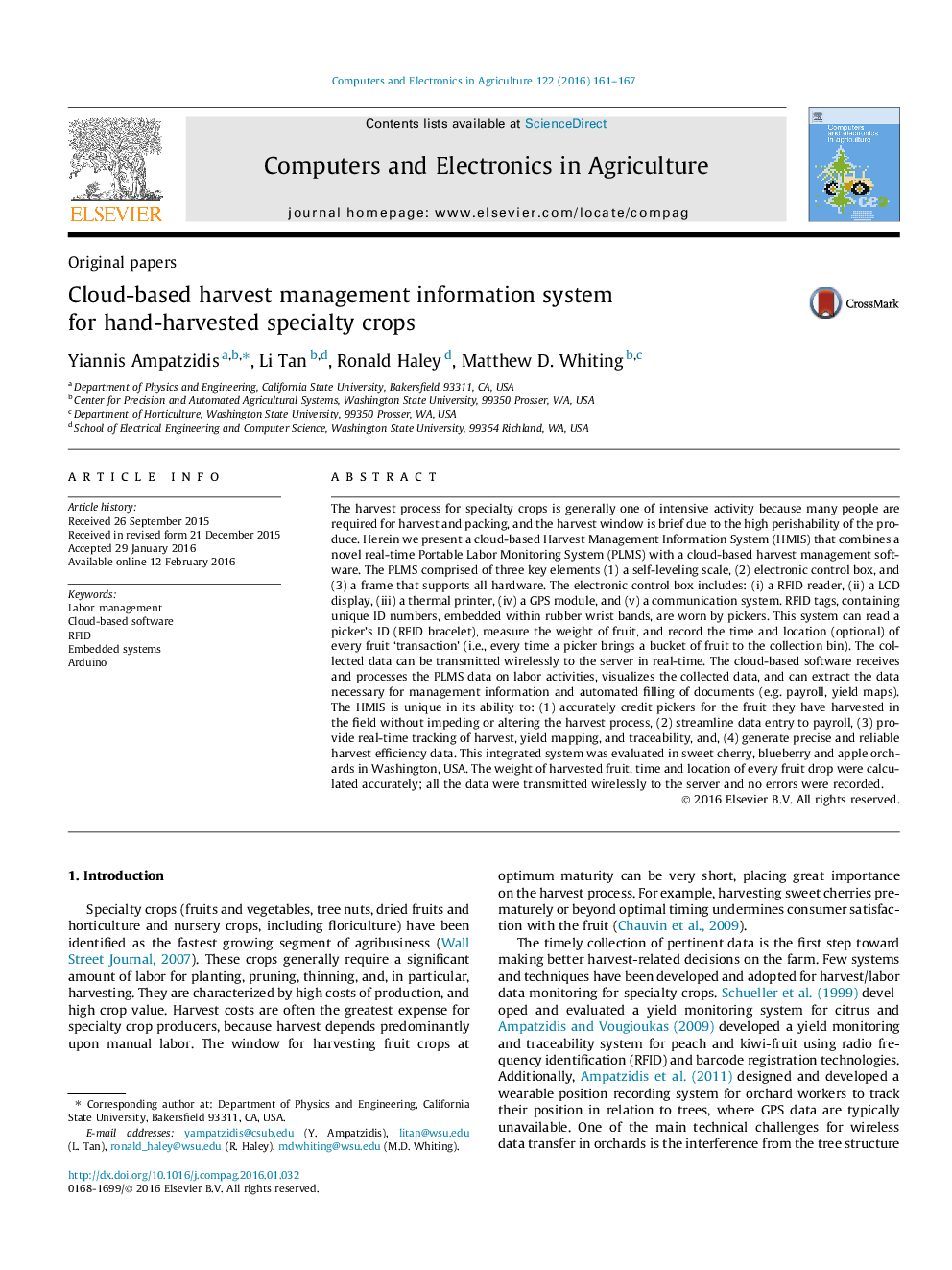| Article ID | Journal | Published Year | Pages | File Type |
|---|---|---|---|---|
| 84047 | Computers and Electronics in Agriculture | 2016 | 7 Pages |
Abstract
• A cloud-based Harvest Management Information System (HMIS) has been developed.• It credits pickers for the fruit they have harvested without impeding the process.• The HMIS provides real-time tracking of harvest, yield mapping, and traceability.• It simplifies data analysis process and visualizes the harvest and labor data.• It improves accuracy of payroll and enhances decision making and logistics.The harvest process for specialty crops is generally one of intensive activity because many people are required for harvest and packing, and the harvest window is brief due to the high perishability of the produce. Herein we present a cloud-based Harvest Management Information System (HMIS) that combines a novel real-time Portable Labor Monitoring System (PLMS) with a cloud-based harvest management software. The PLMS comprised of three key elements (1) a self-leveling scale, (2) electronic control box, and (3) a frame that supports all hardware. The electronic control box includes: (i) a RFID reader, (ii) a LCD display, (iii) a thermal printer, (iv) a GPS module, and (v) a communication system. RFID tags, containing unique ID numbers, embedded within rubber wrist bands, are worn by pickers. This system can read a picker’s ID (RFID bracelet), measure the weight of fruit, and record the time and location (optional) of every fruit ‘transaction’ (i.e., every time a picker brings a bucket of fruit to the collection bin). The collected data can be transmitted wirelessly to the server in real-time. The cloud-based software receives and processes the PLMS data on labor activities, visualizes the collected data, and can extract the data necessary for management information and automated filling of documents (e.g. payroll, yield maps). The HMIS is unique in its ability to: (1) accurately credit pickers for the fruit they have harvested in the field without impeding or altering the harvest process, (2) streamline data entry to payroll, (3) provide real-time tracking of harvest, yield mapping, and traceability, and, (4) generate precise and reliable harvest efficiency data. This integrated system was evaluated in sweet cherry, blueberry and apple orchards in Washington, USA. The weight of harvested fruit, time and location of every fruit drop were calculated accurately; all the data were transmitted wirelessly to the server and no errors were recorded.
Related Topics
Physical Sciences and Engineering
Computer Science
Computer Science Applications
Authors
Yiannis Ampatzidis, Li Tan, Ronald Haley, Matthew D. Whiting,
